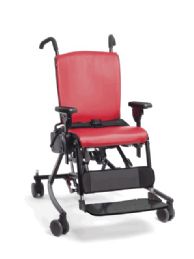
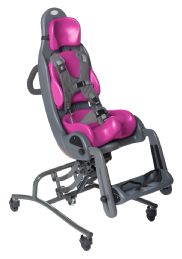
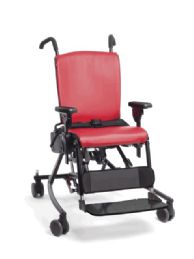
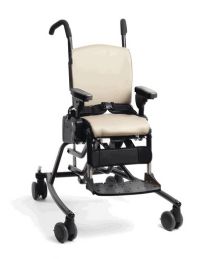
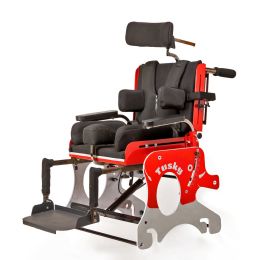
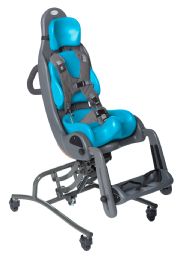
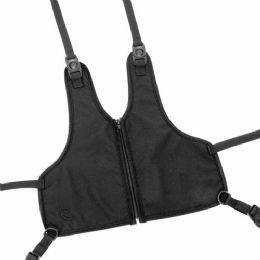
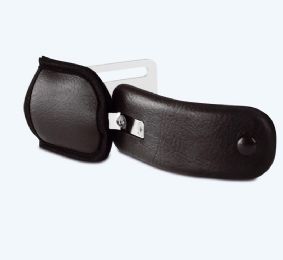
Children who require extra help because of a medical, emotional or learning problem have special needs. This is stuff other children don’t typically need or only need once in a while. For a child with special needs life can be extra challenging, and the goal is to help them be as independent as possible.
Children with special needs may have a medical issue or a development disability. Medical issues for children include serious conditions like heart defects, cancer, cystic fibrosis and muscular dystrophy, or congenital conditions like dwarfism or cerebral palsy. Developmental disabilities for children include Down syndrome, autism or intellectual disabilities. Although every special needs child is different and every family is unique, there are some common concerns that connect parents of challenged kids. This includes the acquisition of appropriate care and equipment, gaining acceptance in the school and community, and planning for their future.
What is a Pediatric High Low Chair?
A pediatric high low chair is a height adjustable and versatile activity chair for a child who requires additional support while sitting, or during activities. High low chairs offer many essential adjustments and advantages to the child and the caregiver including:
• The height ergonomically assists the caregiver while caring for the child during play and feeding time.
• The child is at the same height as peers and can communicate face to face.
• The height is adjustable for the caregiver and for table or desk use.
• It provides good support for a child with extreme positioning needs.
• Mobility for utilization all around the house or going between rooms at school.
A pediatric high low chair helps teachers, parents and therapists who face challenging obstacles when a child with special needs enters the classroom. Ordinary school desks, chairs and busses are unable to position a child the way the body requires because a child with special needs has such specific support and therapy demands. For all children to be able to learn, appropriate special needs products like a pediatric adjustable chair are essential. Positioning a child to benefit from educational programs at school, a therapy program, or a class field trip has been made easier through special needs product designs. High low chairs with height adjustable tables provide durable, high quality adaptive systems for students of all ages.
What Options are Available in a Pediatric High Low Chair?
Pediatric high low chairs can have easy-to-make adjustments, requiring no tools to keep nearby. Lateral supports that are fully adjustable in height, width and angle help with side support. Being able to adjust the chair while the child is in it saves time and is easier to gauge. Having tilt-in-space capabilities encourages sit-to-stand positions. The base can tilt forward and backward, depending on the need. A pediatric high low chair that has seat and backrest springs allows for calming the child through self-generated motion, such as what may occur with autism. The springs can also be locked when not needed.
Armrests provide side boundaries and arm weight-bearing assistance to aid in trunk control. Armrests that can be raised or lowered accommodate a child who needs extra trunk support. A foot pump to adjust the height allows the caregiver to lower the chair until the child’s feet are on the floor, or raise it to table height. Having casters that lock enable the chair to be pushed in a straight line without it drifting to the side. When the casters are unlocked, they can swivel so the chair can be maneuvered into tight spaces. Comfortable backrest and seat pads are essential to provide cushioned support and to prevent decubiti.
What Accessories are Available for a Pediatric High Low Chair?
There are several accessories that can be added to a pediatric high low chair, depending on the child’s specific needs:
• Push handles make it easy for the caregiver to transport and maneuver a child in an activity chair from place to place.
• Headrests help position a child with poor head control. They are usually contoured and adjust front to back, up and down.
• Lateral supports are important for a child who needs good upper body support. They help keep the spine properly aligned, position the child securely and correctly, and are adjustable.
• A chest strap provides added trunk support and security for those without upper torso control.
• A tray can be attached to the armrests and provides a play, work and feeding surface with raised edges, with capabilities to be set at angles.
• A butterfly harness provides maximum front support for a child, engendering safety, security and freedom of movement.
• A thigh belt gives added security and support for a child’s thighs while helping him adduct his knees.
• A pelvic harness is like a typical seat belt that firmly positions a child’s pelvis by securing upper thighs and hips without putting pressure on the abdomen. It encourages proper spine alignment and controls extreme extensor spasticity that can result from sacral sitting.
• Hip guides provide security and safety at the sides of the pelvis to align the torso, and are important for proper spine alignment.
• An abductor separates the knees to help control spastic muscles that cause legs to scissor, and is necessary for good joint and body alignment.
• An adductor provides side boundaries for the knees and helps maintain proper body and joint alignment by supporting each leg individually.
• A footboard is used for placement of the feet and some weight bearing through the legs and feet. It is required for attaching ankle straps and sandals to meet specific positioning needs.
• Ankle straps secure the feet with limited muscle control and movement, and enable a moderate range of movement while improving independence in postural control.
• Sandals are necessary for those who are unable to control leg movement, and can be adjusted and help align the body for optimum positioning.
• Wedges require sandals and are made especially for those with specific ankle positioning needs or uneven leg lengths.
• A lumbar and seat support kit can be custom made for extra postural support. The lumbar support can be inserted behind the back rest pad, and the seat support inserted under the seat pad toward the front to prevent the child from sliding forward.
Hulet Smith, OT
Rehabmart Co-Founder & CEO
lb